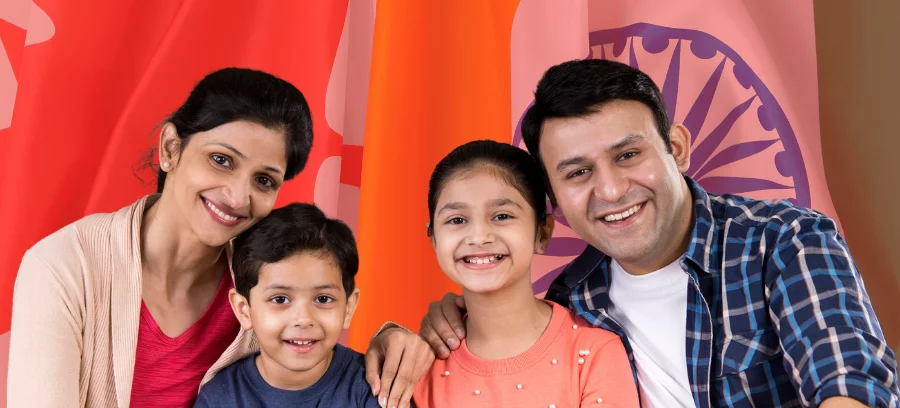These days, lots of people are connected to more than just one country. This can raise doubts about dual citizenship. To be specific, can you be a citizen of both Canada and India? Let’s learn about the regulations, perks, and methods concerning canada and india dual citizenship. Knowing these can guide you to make wise choices, particularly if you’re thinking about moving to Canada with assistance from services like Immignation.
Understanding Dual Citizenship
Being a dual citizen is like having two keys to two houses. You are, legally, part of two different countries. This grants you the privileges and duties of both households. But remember, not every country hands out two keys. The guidelines change a lot from place to place.
The Status Of Canada And India Dual Citizenship
Investigating the potential for Canada And India Dual Citizenship? You must know the distinct laws in both nations.
Canada’s Stance on Dual Citizenship
Canada has accepted laws that permit dual citizenship. A person in Canada can become a citizen of another nation and still keep their Canadian status. The mosaic of backgrounds among Canadians and Canada’s open-door immigration stance results in many having dual nationality. Grasping these perks could be vital if you are aiming to move to Canada.
India’s Stance on Dual Citizenship
Unlike many countries, India doesn’t support dual citizenship. If Indian citizens gained nationality elsewhere, they’d be obliged to give up their Indian one. Conversely, India does provide something named the Overseas Citizenship of India (OCI) card. Certainly not an actual citizenship, this OCI card conveys many benefits of residency and travel, without the need of surrendering your foreign nationality. A popular route for Indians making a move to countries, especially to Canada.
Difference Between PR and Citizenship in Canada

Let’s break down dual citizenship. To do understand difference between pr and citizenship in canada, we first need to know how Permanent Residency (PR) and Citizenship in Canada differ.
Permanent Residency
Living in Canada forever? That’s what Permanent Residency provides! You can stay and have a job there without a time limit. Plus, Perma-residents get cool perks like health cover and community aid. But it’s not the same as being a born Canadian, right? You can’t join in national voting and you have to refresh your PR tag every half-decade.
Citizenship
Being a Canadian citizen comes with all the benefits and duties of citizenship. You can vote, go for political post or get a Canadian passport. After becoming a Permanent Resident and fulfilling residency time, the next thing is citizenship. Immignation can guide you in applying for PR and later, citizenship in Canada.
Why Consider Dual Citizenship?
People linked to both Canada and India might see dual citizenship as beneficial. However, let’s not forget that India doesn’t allow dual citizenship.
Benefits of Canadian Citizenship
- Travel Freedom: Canadian passport holders enjoy visa-free or visa-on-arrival entry into many countries.
- Political Participation: Citizens can vote and run for office.
- Security and Stability: Citizenship provides a sense of belonging and security.
- Economic Opportunities: Access to a robust economy and social benefits.
Benefits of the OCI Card
- Extended Residency Rights: OCI cardholders can live and work in India indefinitely.
- Travel Flexibility: They can enter and exit India without a visa.
- Property Ownership: They can own non-agricultural property in India.
How to Apply for an OCI Card After Acquiring Canadian Citizenship
Are you an Indian, now a Canadian citizen? Getting an Overseas Citizenship of India (OCI) card helps keep your link to India strong. Here’s a simple, step by step method to apply for an OCI card:
Step 1: Gather Required Documents
Before you start your application, ensure you have all the necessary documents:
- Proof of current citizenship (Canadian passport)
- Proof of former Indian citizenship (Indian passport, birth certificate, or other relevant documents)
- Passport-sized photographs
- Proof of address
Step 2: Complete the Online Application
Head over to the OCI Services site and fill out the digital application. Make sure to add scanned copies of your necessary documents and pictures. Ensure every detail is correct and corresponds with your original paper.
Step 3: Submit the Application
After you’ve filled out the web-based form, take out a print of your application. Also, assemble the necessary supporting papers. Turn these papers into the assigned Indian mission or consulate in Canada. Double-check if you need to set a schedule for submission. So, look into the unique needs of your local consulate.
Step 4: Pay the Application Fee
For the OCI card application, you need to pay a specified fee. The amount differs from time to time. You can verify the present charges on the OCI Services webpage or consult your nearby consulate. The ways to pay also shift, offering online payment facilities or directly paying at the consulate.
Step 5: Track Your Application
Once you’ve submitted, the OCI Services website lets you follow your application’s progress. Timeframes aren’t set in stone, but getting your OCI card usually takes several weeks to months.
Step 6: Receive Your OCI Card
When your application gets the green light, a notification will pop up, telling you to grab your OCI card from the Indian outpost or consulate where you sent it in. This OCI card? It’s your golden ticket! You’ll use it to live, work, and zip around India, no visa required.
Getting an OCI card helps you keep that close bond with India while reaping the perks of being a Canadian citizen. Need help applying? Immignation is here with the right expertise to guarantee a hassle-free and triumphant application.
Does India Allow Dual Citizenship with Canada?

India has a clear stand that dual citizenship with Canada or any other nations is prohibited. Instead, it presents the OCI card. This card gives the perks of Indian residence but stops short of giving complete citizenship. For those who are originally from India but have obtained Canadian citizenship, this card is a great choice to keep the connection with India strong.
Navigating Citizenship and PR with Immignation
If you’re thinking about immigrating, Immignation can make it simpler. They guide you through everything about PR and citizenship. They make sure you know the rules, benefits, and steps. This way, your move is easy and you’ll make the right choices.
Practical Steps for Transitioning Between Canada and India
- Understand Your Goals: Determine if your primary goal is to acquire Canadian citizenship, maintain ties with India, or both.
- Begin Applying for PR: Begin applying for Permanent Residency through Express Entry or other immigration programs in Canada.
- Fulfill Residency Requirements: You must live in Canada for at least three out of the past five years. This requirement is essential for gaining citizenship.
- Apply for Canadian Citizenship: Once eligible, apply for citizenship. Immignation can assist you in this process.
- Obtain an OCI Card: If you decide to acquire Canadian citizenship, apply for an OCI card to maintain residency and travel privileges in India.
Conclusion
Canada and India don’t allow dual citizenship. However, certain options like Canada’s citizenship and the OCI card can keep you connected to both nations. By relying on experts from Immignation, all the twists and turns of immigration and citizenship become much simpler. As a citizen of the world, seize the opportunities and enjoy the advantages that both Canada and India provide. Understanding the rules around Canada and India dual citizenship can help you make informed decisions and maintain ties with both countries.
FAQ’S
Can I hold dual citizenship in both Canada and India?
No, you can’t be a dual citizen of Canada and India. Sure, Canada’s okay with you holding citizenship in two places. But India? Not so much. If you get citizenship somewhere else, India says you have to give up being an Indian citizen. They do have this thing, though – the Overseas Citizenship of India (OCI) card.
What is the Difference between Permanent Residency (PR) and Citizenship in Canada?
Gaining Permanent Residency (PR) in Canada means being able to live and work there indefinitely. You can also use some social benefits. But, PR holders can’t vote in national elections or have some public jobs. Being a Canadian citizen grants complete rights. These rights include voting, getting a Canadian passport, and campaigning for politics. Usually, one first stays as a PR holder, meeting certain living requirements, then becomes a citizen.
What are the benefits of the Overseas Citizenship of India (OCI) card?
Imagine having an OCI card. It’s like holding a key that offers multiple advantages. You get to enjoy life and work permanently in India, no need for a visa every time you visit, and you can buy non-farm property. Not just that, it’s actually perfect for folks who once called India home but later became citizens of other nations, say Canada, and still want to keep their connections with India strong.
How can Immignation help me with my immigration and citizenship process?
Need help with your migration process? Immignation can help you. They offer useful services ranging from Canada Permanent Residency (PR) application to securing Canadian citizenship. Immignation can guide you on how to meet residents needs, make sense of legal duties, and manage PR and citizenship application forms. Plus, they can help you get a grip on the OCI card requirements and keep your connections with India intact.

